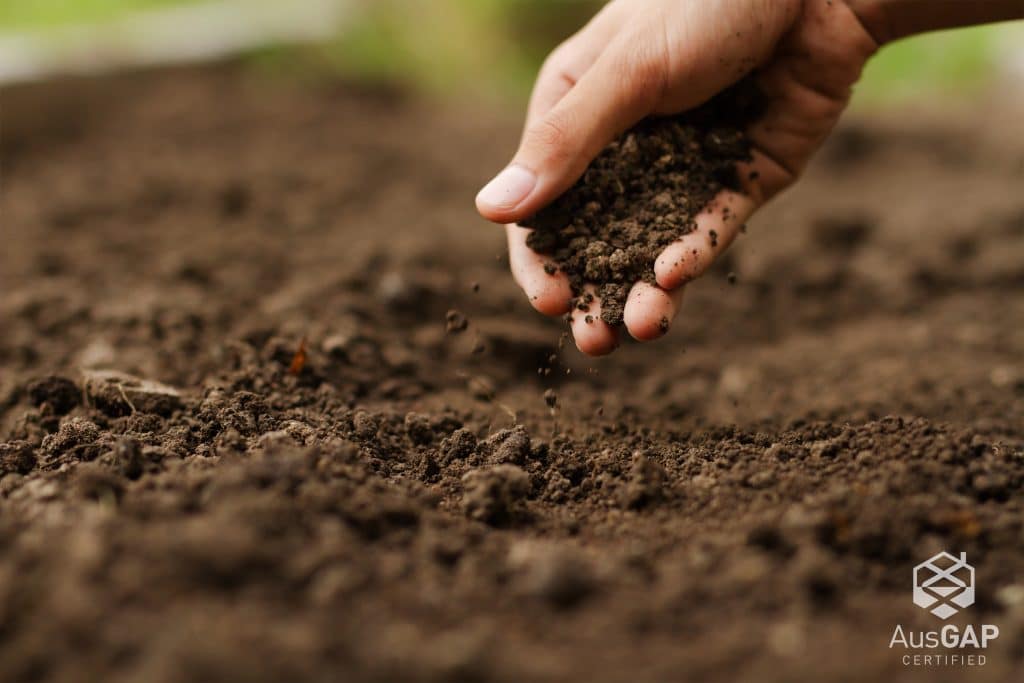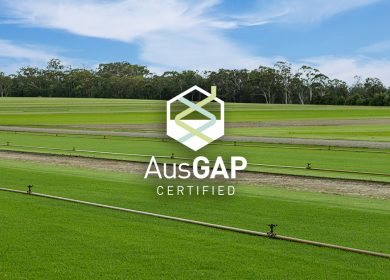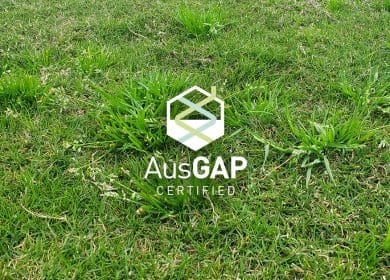A guide to precision fertilising and its benefits for natural turf

Turfgrass – like all plants – requires nutrients to grow and remain healthy. While fertilising is an essential practice of turfgrass management, finding the right balance or nutrients can be difficult. Precision fertilising accounts for varying factors such as turfgrass species, soil type, weather condition and cultural practices. This ensures the turfgrass receives the right amount of nutrients at the right time. Read on to find out more about precision fertilising and how it can benefit natural turf.
Precision fertilising can be particularly useful for sporting facilities like golf greens. For example, the way golf greens are built usually creates a low capacity to hold and supply nutrients. This means there must always be a slow and steady supply of nutrients to ensure optimal performance and health.

What is precision fertilising?
Precision fertilising is about accounting for every factor in plant nutrient uptake and ensuring specific amounts of nutrients are supplied to guarantee optimal health and performance. For example, this takes into account the nitrogen (N) requirements of the turf cultivar, the effect of cultural practices such as mowing height and frequency, irrigation and aeration, as well as seasonal and weather impacts, and soil structure and fertility.

What are the benefits?
Precision fertilising in conjunction with proper cultural practices can provide many benefits to the turfgrass but as well as the end user. Furthermore, this technique focuses on providing only the require nutrients of the turfgrass. This accuracy helps reduce excess fertiliser application and minimises the risk of environmental pollution. This fertilising technique provides several benefits for warm season turfgrasses, including:
- Improved nutrient uptake: Precision fertilising helps to ensure that the nutrients in fertilisers are available to the turfgrass when it needs them the most. Applying too much fertiliser can lead to nutrient leaching or runoff, which can cause environmental pollution and waste resources. Applying too little can limit the growth and development of the turfgrass. This ensures that the nutrients in the fertiliser are utilised efficiently by the turfgrass.
- Enhanced turfgrass health: This technique helps to maintain the right nutrient balance for the turfgrass, leading to healthier and more vigorous growth. Proper nutrient levels can enhance the colour, density, and texture of the turfgrass, making it more attractive and resistant to pests and diseases.
- Reduced costs: It can help to reduce the amount of fertiliser needed to maintain healthy turfgrass. By applying fertiliser only when needed, the overall cost of fertilisation can be minimised.
How to conduct precision fertilising?
There are two main things to consider when conducting this technique, the method in how you fertilise and how you test for nutrient levels.
Methods:
- Slow-release fertilisers: can provide a steady supply of nutrients to the turfgrass over an extended period. This can help to reduce the need for frequent fertilisation and minimise the risk of nutrient leaching or runoff.
- Spoon-feeding: involves applying small amounts of fertiliser frequently throughout the growing season. This technique helps to ensure that the turfgrass has a steady supply of nutrients without overloading the soil. Spoon-feeding can be done using liquid or granular fertilisers, depending on the specific needs of the turfgrass.
- Foliar feeding: involves applying liquid fertilisers directly to the leaves of the turfgrass. This technique can be useful for correcting nutrient deficiencies quickly and providing a quick boost of nutrients to the turfgrass. Foliar feeding should be done carefully to avoid leaf burn.
- Topdressing: involves applying a thin layer of compost or sand to the turfgrass. This technique can help to improve soil structure, reduce thatch build-up, and provide a source of slow-release nutrients. Topdressing can be done using specialised equipment or by hand.
- Controlled-release fertilisers: release nutrients over an extended period based on environmental conditions, such as temperature and moisture. These fertilisers can help to reduce the frequency of fertilisation and ensure that the turfgrass receives a steady supply of nutrients.
- Microbial inoculants: contain beneficial micro-organisms that can help to improve nutrient uptake by the turfgrass. These products can be applied as a liquid or granular, and they can help to improve soil structure, reduce thatch build-up, and promote healthy root growth.
Testing:
- Soil testing: is an essential tool turfgrass management. It helps to determine the nutrient status of the soil and identify any nutrient deficiencies or imbalances. Soil testing can be done through a variety of methods, including sending soil samples to a lab for analysis or using a soil testing kit. The results of soil testing can help to guide fertiliser application rates and timing.
- Leaf tissue testing: involves analysing the nutrient content of the leaves of the turfgrass. This technique can help to identify nutrient deficiencies or imbalances that may not be apparent from soil testing alone. The results of leaf tissue testing can help to guide fertiliser application rates and timing, as well as other cultural practices like irrigation and pest management.
- Visual assessment: involves monitoring the health and appearance of the turfgrass to identify any signs of nutrient deficiencies or imbalances. This can include monitoring for yellowing or discolouration of the leaves, stunted growth, or other signs of stress. Visual assessment can help to guide fertiliser application rates and timing, but it should be used in conjunction with soil and leaf tissue testing to ensure precise applications.

In conclusion, precision fertilising is a vital aspect of warm season turfgrass management. Applying products precisely can help to ensure that turfgrasses receive the right amount of nutrients at the right time, leading to healthier and quality turf. It’s important to note that this technique should always be done in conjunction with proper cultural practices, such as mowing, irrigation, and pest management. These practices can help to reduce the nutrient requirements of the turfgrass and promote healthy growth.


